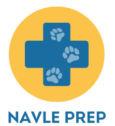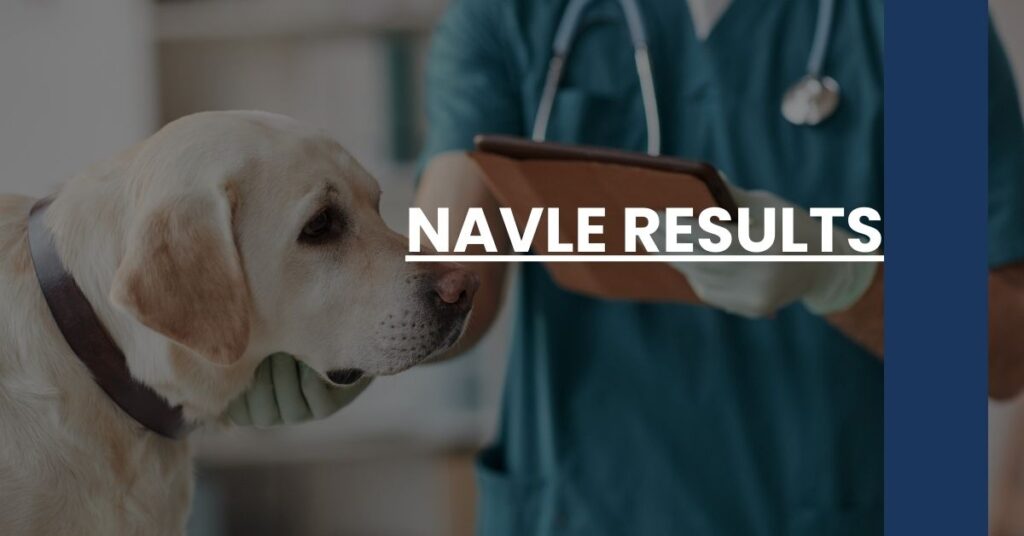For veterinary graduates, NAVLE results are pivotal: pass, and you proceed toward your veterinary license; fail, and it’s back to the drawing board. You’ll receive a score ranging from 200 to 800, with a minimum passing score set at 425. Expect your results mid-January for the November-December testing window, and mid-May for the April window.
In this article, we’ll cover:
- The timeline for NAVLE results.
- Analyzing your score report.
- Strategies if you need a retake.
Remember, your NAVLE score is a vital step in launching your veterinary career. Keep an eye on your goal, and whether celebrating or preparing for another round, know what comes next.
- Introduction to the NAVLE
- How NAVLE Scores Are Calculated
- Timeline for Receiving NAVLE Results
- Understanding Your NAVLE Score Report
- What to Do If You Don’t Pass the NAVLE
- How to Verify Your NAVLE Results
- Impact of NAVLE Results on Veterinary Licensing
- NAVLE Results and Residency Programs
- Preparing for the NAVLE: Tips and Strategies
- Conclusion: Next Steps After Receiving NAVLE Results
Introduction to the NAVLE
If you’re a veterinary student or graduate, you know that passing the North American Veterinary Licensing Examination (NAVLE) is a critical step in your journey to becoming a fully licensed veterinarian. It’s the one examination that stands between you and your dream of practicing veterinary medicine in the United States or Canada. The NAVLE consists of 360 questions, with 300 of those being scored, designed to test your knowledge, abilities, and critical thinking skills that are crucial to properly diagnosing and treating our animal friends.
The North American Veterinary Licensing Examination is an essential milestone, and understanding how to navigate your NAVLE results is just as important as passing the test itself. With the high stakes attached to this exam, it’s natural to feel a bit anxious about what comes next. So, let’s walk through the journey of your NAVLE results, from understanding how they are calculated to what to do if you need to retake the exam.
How NAVLE Scores Are Calculated
First, let’s demystify the scoring. Your NAVLE result isn’t just a number—it’s a reflection of your mastery over a wide range of veterinary topics. Scores range from 200 to 800, with a passing score firmly set at 425. Keep in mind, this scoring isn’t a percentage. It’s a scaled score that takes the difficulty of individual questions into account. That means your raw score, or the number of questions you answered correctly, is adjusted to reflect the relative difficulty of your exam form as compared to other forms of the exam.
This process is known as equating, and it’s essential in ensuring that the passing standard is consistent across all versions of the test, regardless of when or where you take it. Despite popular misconceptions, the exam is not graded on a curve, so your performance is not directly compared to others who took the exam with you. Each candidate’s score reflects individual performance against a defined standard of veterinary competence.
Timeline for Receiving NAVLE Results
After you’ve completed your exam, you’ll be eager to get your hands on your NAVLE results. Typically, you can expect to receive them about four weeks after the examination window closes. This means if you sat for the exam during the November-December testing window, you can anticipate your results by mid-January, while the April testing window results should be available by mid-May.
Keep in mind this timeline can fluctuate based on factors such as administrative processes or the volume of test-takers. Rest assured, you will receive an official notification as soon as your results are ready.
Understanding Your NAVLE Score Report
Your NAVLE score report is more than just a pass or fail notice; it’s a comprehensive document that shows how you performed across different areas of veterinary medical knowledge. Here’s a breakdown of what you can expect to find in your score report:
- Exact Score: This is your scaled score between 200 and 800.
- Performance Profile: You’ll see how well you did in various content areas. This gives you a clear picture of your strengths and any weak spots that may require further study.
- Pass/Fail Status: The bottom line that tells you whether you met the standard required to pass the examination.
Though it may be tempting to focus solely on your overall score, paying attention to your performance profile can be particularly valuable. It outlines the areas where you excelled and where there’s room for improvement, which is especially useful if you find yourself needing to retake the NAVLE. You may also opt for expanded feedback, which, for an additional fee, dives deeper into the questions you missed, helping you tailor your study strategy more effectively. The ICVA’s FAQ page can provide more detailed insights into the nature of the score reports.
What to Do If You Don’t Pass the NAVLE
Finding out that you didn’t pass the NAVLE can be disappointing, but it’s not the end of the road. Reflect on your score report and identify which areas need your attention. Develop a study plan that focuses on these weak spots, and consider different study approaches or resources that might help reinforce these topics.
Remember, you can retake the NAVLE, but there are rules around how many attempts you’re allowed. Starting from November-December 2024, those who have failed five times may seek to appeal for an additional retake. This is where understanding your performance profile becomes crucial. Pinpointing exactly where your knowledge fell short the first time around ensures that each study session brings you closer to meeting the pass standards.
If you’ve faced multiple unsuccessful attempts, it might be helpful to seek advice from your educators, join a study group, or possibly get in touch with a professional tutor who has a track record of helping students overcome the NAVLE hurdle. Turning a setback into a chance for a more focused, tailored approach to your studies could be the key to your success on your next try. Take comfort in knowing that there’s a community of future veterinarians who have traversed this path, shared their experiences, and offered advice on platforms like Student Doctor Network forums.
As you prepare for your retake, remember it’s an opportunity for growth. With careful planning, targeted studying, and maybe a different set of strategies, you’ll stand a much stronger chance of receiving the NAVLE results you’ve been working toward.
How to Verify Your NAVLE Results
When your NAVLE results arrive, it’s natural to want to trust that everything has been calculated properly. However, in the rare event that you think there has been an error or just for your peace of mind, you have the option to request a score verification. To do so, you’ll need to follow the outlined process and pay any applicable fees.
For confirming that your results are accurate, you can initiate a score verification through the testing service or the ICVA. This usually involves completing a specific form and remitting a fee. It’s essential to do this within the stipulated timeframe provided in your score report—typically within a month of receiving your results. Ensure you save a copy of your request for your records and follow up if you don’t receive confirmation within a few weeks.
Navigate to the ICVA’s FAQ page to get an in-depth understanding of the verification process and where to send your requests. Keep in mind that this step is seldom needed as examination scoring is highly accurate, but the option is there if required.
Impact of NAVLE Results on Veterinary Licensing
Your NAVLE results are more than just a score; they’re your ticket to becoming a licensed veterinarian. Passing the NAVLE is a non-negotiable checkpoint on the path to obtaining your veterinary license. Once you’ve passed, your scores will be sent directly to the licensing board in the jurisdiction where you seek to practice. Here, however, is where you should consider the full suite of requirements for licensure, which often includes completing a degree from an accredited veterinary program, fulfilling practical training hours, and sometimes passing additional examinations or jurisprudence assessments.
Stay proactive and check in with your intended state’s licensing board or the American Association of Veterinary State Boards for a comprehensive list of requirements. Your NAVLE results are a critical component, but they are but one piece of a larger puzzle. Consider your pass a significant hurdle cleared on your journey to professional practice.
NAVLE Results and Residency Programs
Your NAVLE results can also influence your trajectory if you’re aiming to specialize. Many residency programs regard NAVLE results as a critical component of their selection criteria. A passing score is practically a given, but in highly competitive fields, your NAVLE score may play a more significant role. Residency programs are looking for candidates who not only pass but excel, as this indicates a strong foundation in veterinary medicine.
Think of your NAVLE score as part of your professional portfolio. Just like your grades, practical experiences, and personal statements, it helps paint a picture of your potential as a future specialist. If you’re eyeing a residency, it’s worth investing in robust NAVLE preparations. Your aim should be to not only pass but to achieve a score that reflects your deep understanding and aptitude in veterinary science.
Preparing for the NAVLE: Tips and Strategies
Whether you’re taking the NAVLE for the first time or gearing up for a retake, preparation is key. Here are some tips and strategies to help you get NAVLE-ready:
- Create a Study Plan: Outline a schedule that dedicates time to each topic area. Stick to it as much as possible to ensure you’re covering all necessary content.
- Choose the Right Study Materials: Use reputable resources like NAVLE prep books, online question banks, and study guides specifically designed for the NAVLE.
- Practice, Practice, Practice: Take full-length practice exams under test-like conditions. This will help build your testing stamina and identify knowledge gaps.
- Lean on Your Network: Form study groups, find a mentor, or join online forums to exchange knowledge and encouragement with peers who understand the rigor involved.
- Focus on Your Well-being: Balance study time with breaks, exercise, and hobbies to prevent burnout and keep your mind fresh.
- Seek Feedback: If available, consider professional tutoring, especially if you’ve struggled with the exam previously. Objective feedback could prove invaluable.
Remember, your success on the NAVLE hinges on both knowledge and strategy. Go into your prep with a clear plan, tools, and support that align with your learning style. Explore vet-specific forums and communities for additional advice and shared experiences that might resonate with your NAVLE journey.
Conclusion: Next Steps After Receiving NAVLE Results
Once you have your NAVLE results in hand, the road ahead can take several directions. If you’ve passed, it’s time to celebrate and proceed with the next steps toward licensure and possibly, residency programs. This victory validates your dedication and hard work and sets you on a path toward a fulfilling career in veterinary medicine.
If you didn’t achieve the results you hoped for, take a moment to regroup. Turn to your performance profile to guide your future preparations, consider additional resources, or modify your study approach. It’s a setback, but one that countless others have overcome with resilience and determination.
Your NAVLE score, whether it’s a milestone reached or a stepping stone to retake the exam, is a critical part of your professional narrative. Take the time to understand and analyze your results, craft a plan of action for any next steps, and always keep your end goal in sight: improving the lives of animals with your expertise.
Remember, your journey doesn’t end with NAVLE results—it’s just beginning. As you navigate this road, stay informed, stay dedicated, and most of all, stay passionate about the veterinary profession you love.
NAVLE results explained—understand your veterinary exam scores, the impact on licensure, and next steps after the NAVLE.

